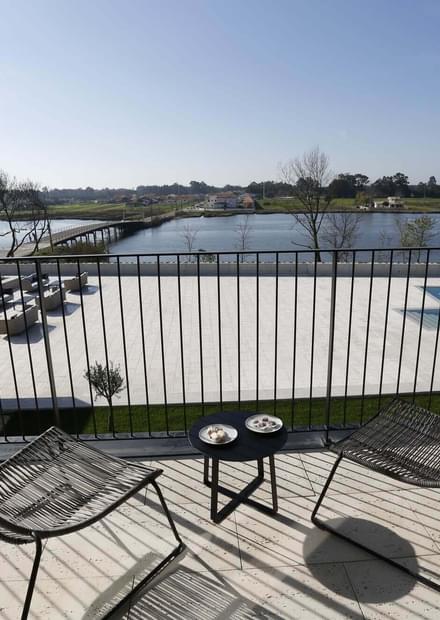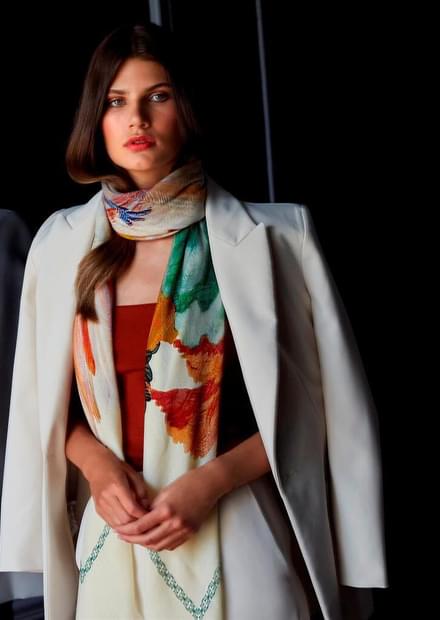In 2024, this world-acclaimed Portuguese brand celebrates 200 years of a deeply rich History, filled with the most inspiring stories. Long gone are the days when the porcelain articles were transported by camels to its clients, so that they could arrive safe and not in pieces. But the brand has preserved its founding soul. Faithful to a memorable past. Eager to the future.
A long successful journey
In Portugal, it is not uncommon to see people turning plates at the table to check if it's a Vista Alegre creation. This outstanding Portuguese brand can be found not only at the Royal tables all over the world or at the White House, but also at the Portuguese homes from North to South. Vista Alegre has always stood for extreme quality and longevity. A symbol of confidence in tradition.
Embraced by the Aveiro Lagoon ("Ria de Aveiro"), a lagoon ecosystem recognised already in the 16th century, Vista Alegre factory benefited from this privileged location. In the past the water courses were the main communication routes for transporting raw materials and products. At the heart of an inspiring natural landscape, the factory developed into a pioneering complex, a reference of good social practices.
In order to overcome the difficulties in producing porcelain, Augusto Ferreira Pinto Basto, the founder's son, paid a technical visit to the French factory in Sèvres. There he studied the composition of the paste and obtained information that proved fundamental to the discovery in 1832 of abundant kaolin deposits to the north of Ílhavo.
With the regular production of porcelain between 1832 and 1840, there were important improvements in the quality of the pastes and glazes, and production also benefited from significant technological advances. During the first decades of production, the company's commitment to hiring foreign masters with experience in ceramics production was also decisive in training a local workforce that was highly specialised in porcelain production.
In 1851, Vista Alegre took part in the Universal Exhibition organised at the Crystal Palace in London, and in 1867 it received international recognition at the Universal Exhibition in Paris.
In 1924, with the nomination of João Theodoro Ferreira Pinto Basto as Managing Director, a period of revival began. As well as growth and renewal in the industrial area, there was also a strong revitalisation at the creative level. Modernist styles such as Art Deco or Functionalism revealed the company's ability to adapt to the social and aesthetic changes of the turn of the century.
This successful path was consolidated in the following decades of the 20th century. In-depth industrial restructuring allowed the company to make production more profitable, making its ability to respond to increased consumption and the globalisation of markets more effective. On the other hand, the maintenance of a highly specialised manufacturing area, centred on the know-how of the workers and the company's centuries-old traditions, allowed the Factory to occupy a place of primacy among the major European manufacturers.
A revolutionary social project
More than a porcelain factory, Vista Alegre has always been a highly successful social project. A whole complex that included, apart form the factory premises, the workers' neighbourhood, a theatre, a school, a chapel and even the first fire brigade in Portugal.
The Pinto Basto family was responsible for the introduction of football in Portugal. The first football match ever to be played in Portugal took place in October 1886. In 1915, the Vista Alegre Sporting Club was founded and nowadays this club boasts 400 federated athletes within the Aveiro Football Association.
The founder of Vista Alegre, José Ferreira Pinto Basto, was a man ahead of his time, owner of a deeply inspiring vision. He was aware that a qualified workforce was absolutely crucial for the success of this business. Therefore, already in 1824, he began to build the workers' neighbourhood. The first inhabitants were glass and ceramics artists from all over the country. The creation of this community played a major role in the success of Vista Alegre factory.
José Ferreira Pinto Basto also founded a school with internship, where factory workers could learn to read, write, draw, paint and play music.
In 1826, the workers' philharmonic orchestra was born and in 1851 the beautiful Vista Alegre Theatre with paintings of prestigious foreign artists.
From Ílhavo to the world
The brand Vista Alegre is naturally treasured by the community of Ílhavo, a surprising city, located 6 km away from Aveiro, known as a land of brave sailors who played a major role during the Portuguese Discoveries and the codfish campaigns in Newfoundland.
In 2 centuries, this Portuguese top brand has won many prizes all over the globe, being recognised as a brand of excellence that honours tradition, as well as the creative power of contemporaneity. Vista Alegre puts design on the spotlight, working with a long list of innovative national and international designers who create jaw-dropping masterpieces.
Duck time
"Duck time", created by the Italian illustrators Ale + Ale, is the name of the first piece produced in 2024 to celebrate the 200th anniversary of Vista Alegre. This is a calendar plate with the first mascot of Vista Alegre, the duck, at the centre. The duck as a symbol of resilience and flexibility, an animal that can swim, fly and walk. "Duck time" depicts the passage of Time, pointing out some of the most significant moments in the long history of Vista Alegre. Many other pieces will follow carrying the 200 logo. Time to celebrate and to dream of the future, as Visabeira Group dreamt back in 2009!













